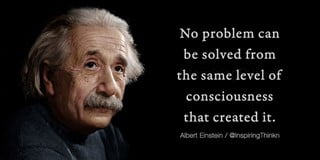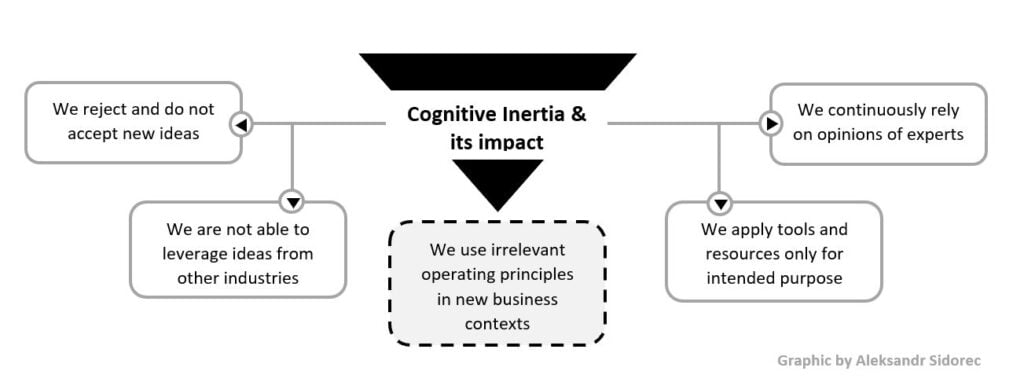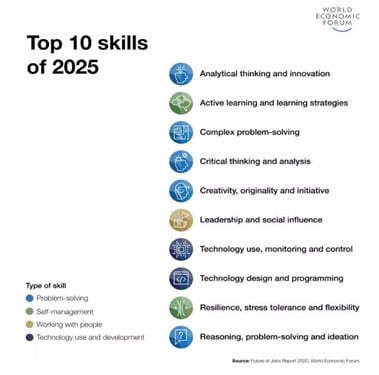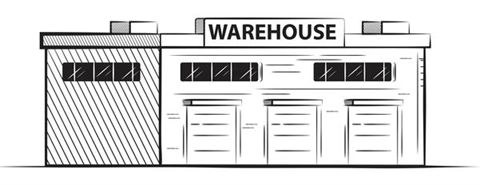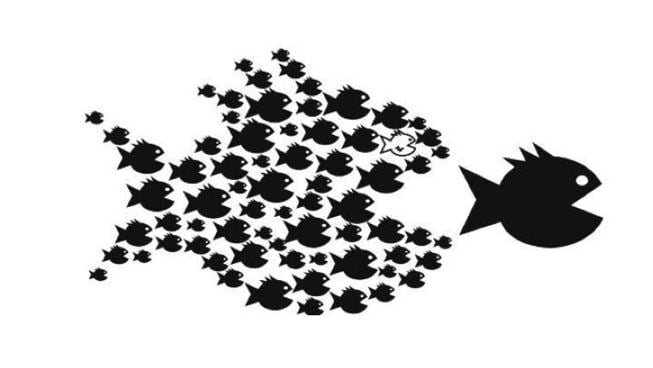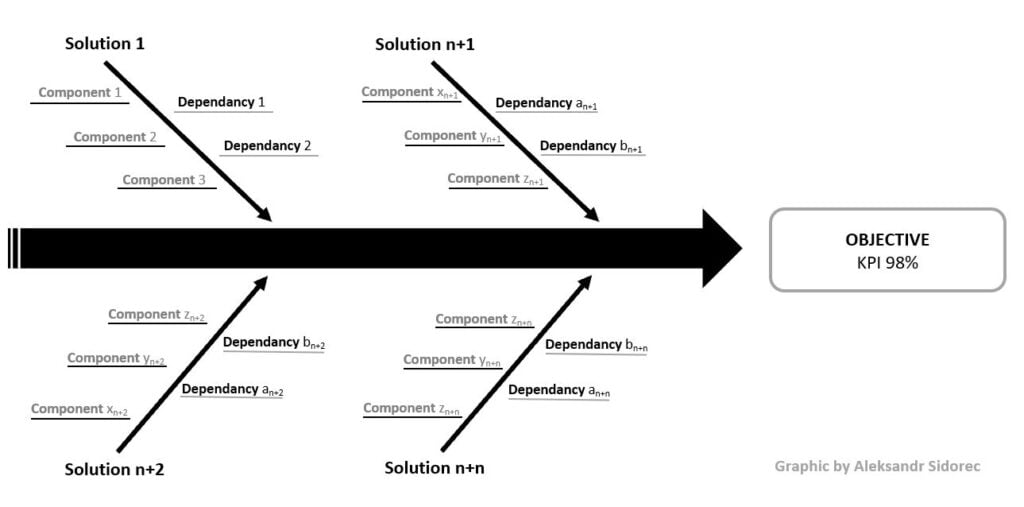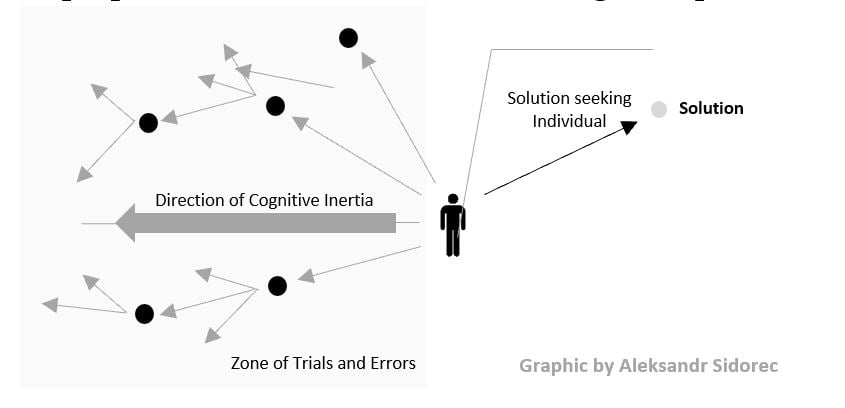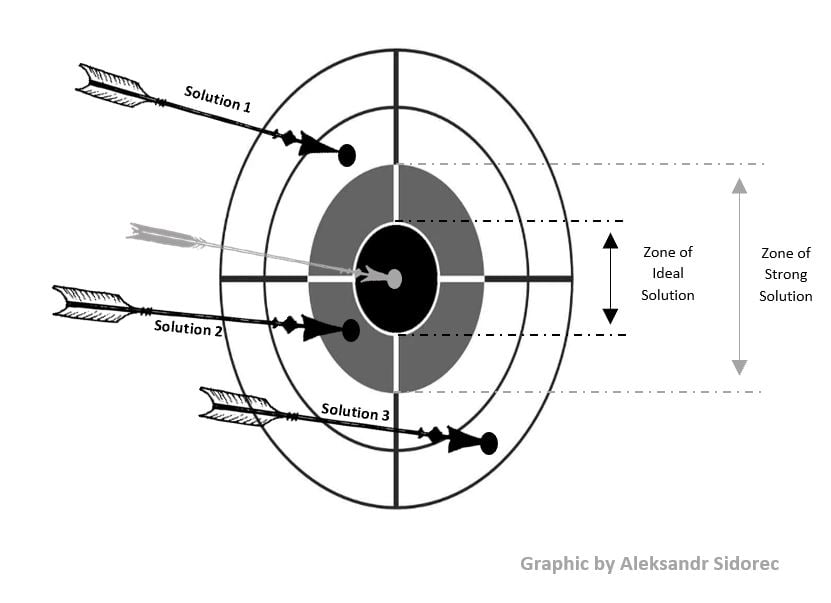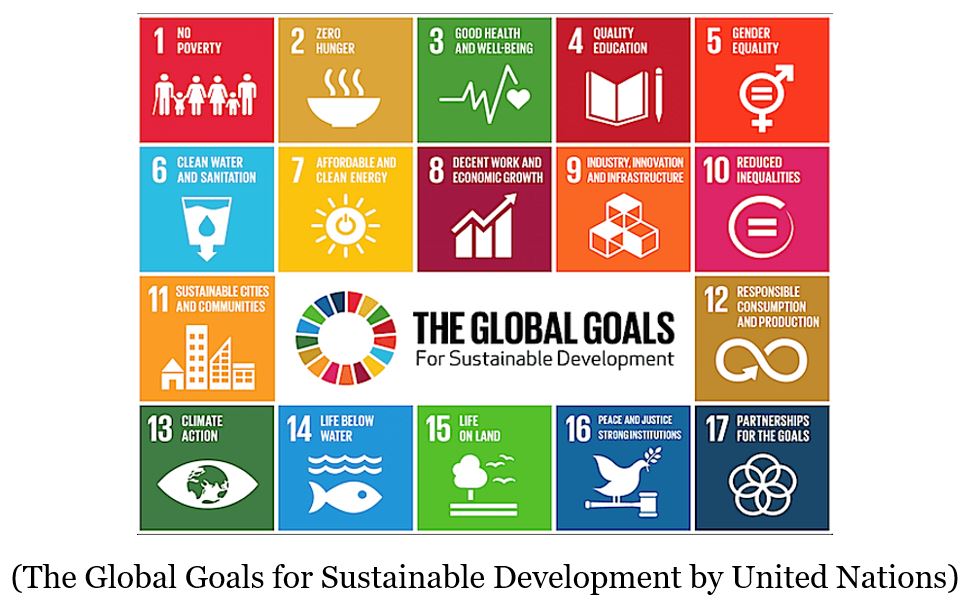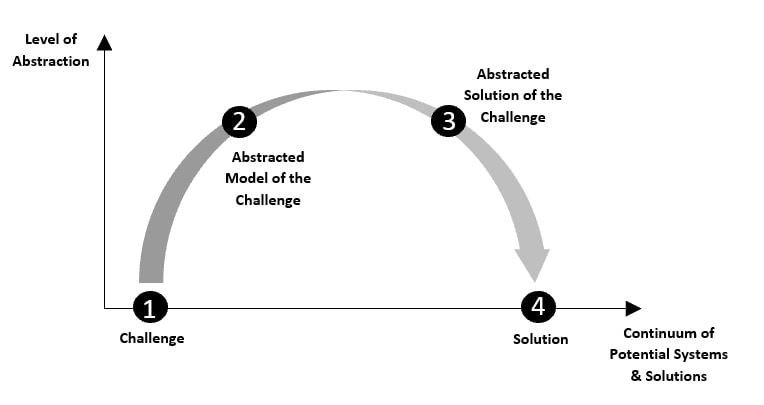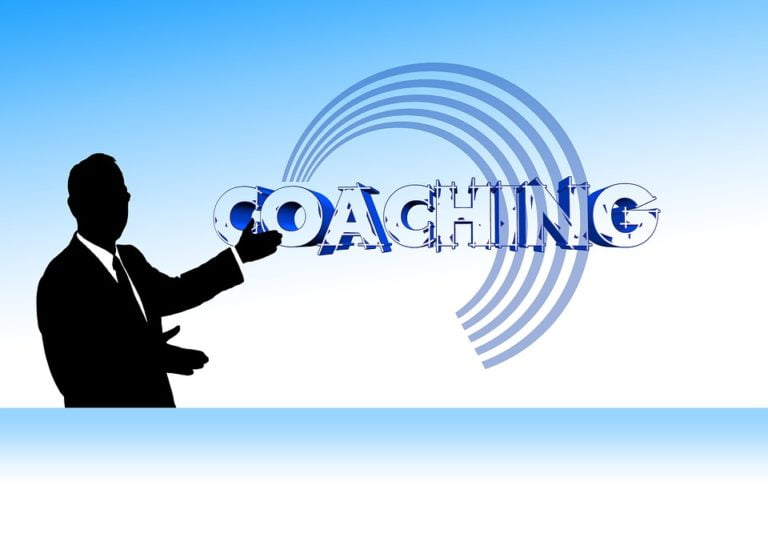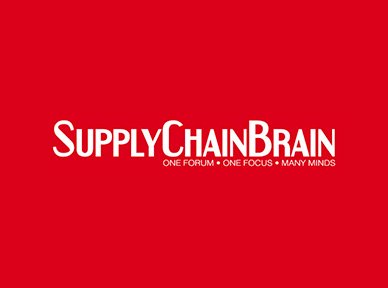Idealised Supply Chain Design: Against Inertia.
I have previously written about the basic concepts of several important principles, especially Ideality. This concept is not utopia because it is capable of helping to improve and rebuild systems while recognizing the fact that no idealized solution can stay ideal for long, which is why we are talking about a continuously ideal-seeking state or system.
Such an idealisation unleashes out-of-box thinking because it relaxes self-imposed cognitive constraints (=inertia) and encourages exploration of areas that normally would be untouched due to cultural, organisational, or professional taboos.
That is why, in my view, for any of us to convert the apparently impossible into the possible across supply chains, it is necessary to remove or relax limiting factors that derive from considering specific feasibility.
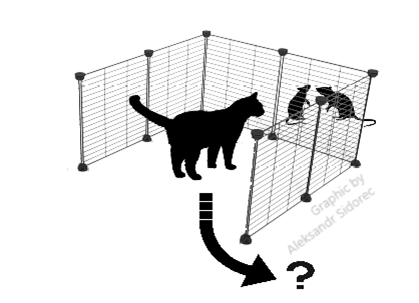
In the business world it means approaching the solutions, systems and supply chain design in a way that removes mental barriers and challenges our thinking to activate breakthrough capabilities that will have a positive impact on company, its ecosystem and our society overall.
Usually, when we face a specific challenge or task, we unwittingly try to apply solutions, techniques, or models that we already know. This happens unconsciously at the level of mental reflexes. The thing is that such inertia is one of the properties of the human psyche, which is expressed in the fact that consciousness, the human mind, is often subject to the force of habit. Under its influence, when thinking about problems, ideas similar to those already known come into one’s mind at first. The issue is that old ideas are not suitable for new and continuously changing business conditions, they often might replicate what has already been done by competitors and they bring no crucial differentiation.
How often were you part of corporate «Quantum Leap» programmes to realize at the end that the company invested huge effort just make it to run at the same speed as its top competitors (well, it is a best case example) instead of coming with new breakthrough business models creating new markets and value?!
…. and the reason is that in our daily work, cognitive inertia limits our ability to innovate and to come up with new ideas and disruptive ways of solving systematic issues or troubleshooting:
I am sure in your daily life you can find more than just a few examples of any of such cases. I set up my own experiment which counted 23 instances during just one week – the ones that I could spot consciously!
In this particular case I am speaking more than just about creativity, because the objective is to have a set of tools and instruments activating a non-linear way of solving challenging situations that often involve dealing with complex (eco-) systems rather than isolated parts of your enterprise or organisation.
This is well aligned with a report from the World Economic Forum (WEF) published 21 October 2020 about the top 10 job skills of tomorrow:
This is also applicable for Idealised Supply Chain Design (ISCD) with vision to aid development and maturing of systematic (and systems!) thinking, critical analysis and ideation through complex problem-solving to activate mental flexibility and active learning that will drive leadership in innovation. In my opinion, the technology stack is more of a means than end.
But lets return to the topic of inertia itself.
In the psychological literature you might find a lot of factors causing cognitive inertia; some of them are also attributed to the unique constitution of the personality of individual: fear of making mistakes, cognitive laziness, self-doubt, and self-criticism.
I am going to highlight those, that in my opinion, have the biggest influence on the work of business community and choices it makes. Some authors argue that just by being aware of such factors solves 50% of the issues when it comes to automatic behaviour and internal barriers handling, but I am somehow sceptical about this as I have not seen real evidence to support such claims.
So far Daniel Kahneman (book: ”Thinking Fast and Slow”) and only a few other authors have managed to build the holistic understanding and models related to cognitive inertia and bias. But from the practitioner’s point of view, the issue and main question still stays unanswered: what can and should we do with this?!
Use of specific terms and terminology. This lies in setting and seeing the problem in generally accepted terms within a specific discipline, with each term reflecting an already existing technical solution. The disadvantage of such formulations is that the special terms impose on the solver the content corresponding to them. Types of special terms can be different: highly specialized (warehouse, forecast), general technical (sensor, drone), functional (planner, operator), household (food, package), universal (ecosystem) and so on.
That is why formulation of the problem often becomes a self-hypnosis that essentially programs thought in a specific research direction.
Example could be the term “Warehouse”; that puts the person in a position of thinking about a dedicated facility. This mental model triggers the solution exploration within the boundaries of the term.
There is also another way of approaching it – abstracting it to the level of the function or desired activity that is expected to be performed within supply chain, to store. Do you remember the case about sea freight and containers in my previous publication and example of the functional analysis? In my case, when I look at the problem of storing the goods, I get quite a few mental images:
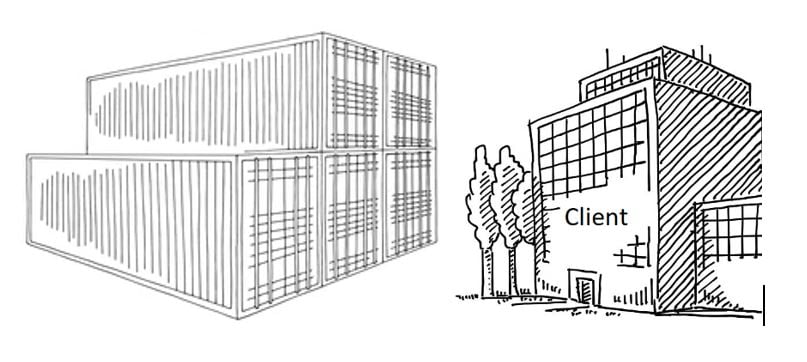
Within a search of solutions of my problem, I might come to the idea of not investing into additional warehousing facilities, but rather: a. Keeping goods and storing them in containers or b. making arrangements with customers that the goods can be stored at their facility in a true spirit of the asset / facility sharing because they have un-utilized space.
But remember, based on Ideality equation that I shared in previous article, it is still not optimal. We want to challenge it further considering we are aiming:
- Receiving the value at no cost (= storage for free)
- Having no system while the specific function is still being performed (= product requires no storage)
System of values and traditions, industry specific habits. Tradition and habits (professional, corporate, national, territorial, religious, etc.) have a great influence on the way we live, collaborate, on the type and content of objects around us, on the way we work and think. On top of it we also have value systems that are highly contextual and impose specific perceptions of things and concepts. This often prevents us from being able to see the reality in a different light.
An Example is a multi-billion family business that is historically proud of owning factories and assets around the world. Every market entry was associated with long lead-times considering that they relied solely on greenfield CAPEX projects. You do not need too much imagination to understand what happened to their business after 2008 in the environment where most of the industry`s new entrants relied mostly on outsourcing models.
Influence of traditional process and function. This type of inertia covers two cases:
- First relates to the habitual sequence of actions and operations. In such cases the cognitive inertia can manifest itself in everything: how you handle the process, how you perform a certain operation on a factory floor, in what order you carry out the entire sequence of processes across the value chain. It is not without reason that we say that habit is our second nature and it applies both to individuals and companies.
- In second, it denotes the habit of the object performing a traditional function. For example, a shop is a place used to buy products; a factory is a place to produce the goods; a van is a means to transport goods. But can a shop or van perform another function? Of course, and a lot of them. It’s obvious to everyone that any object can perform different functions. Nevertheless, this kind of inertia constantly surrounds us in business and personal life.
Apparent uniqueness of the solution. This one, in my opinion, requires special attention. The reason is that this kind of cognitive inertia stops us from the overall progress towards Ideality considering it manifests itself in the following: if there is one solution, why bother about alternatives? Every problem or challenge has several possible solutions and in case you do not invest time and resources to validate alternatives scenarios, you risk missing some promising opportunities.
Such cases I normally represent by adopting Ishikawa Diagram to show the whole spectrum of potential possible solutions. In this case we consider the objective of improving specific KPI to the desired state of 98%:
What often happens – to address specific issue, dedicated team jumps straight to a Solution 1 or 2 that is most comfortable (and sometimes consensus driven) without validating assumptions and checking the alternatives. As result, only marginal improvement achieved and the organisation misses the opportunity to identify and implement the model that would accelerate breakthrough performance transformation.
Why all this is important for us as business community? The major reason is that by being continuously influenced by cognitive inertia, lack of systems thinking and inability to get out of comfort zone we are getting perfectly set for the vicious cycle of trials and errors.
And the worst thing is that it requires thousands of trials and errors being performed in order to come up with just a working (and still not ideal, based on trade-offs) solution that in most cases still maintains a significant risk of not meeting critical business objectives.
Let me visualize it as a web of vectors to show how cognitive inertia actually moves us away from the proper solution when we are on a dangerous path of trials and errors:
Interestingly, we find a lot of an excitement in the quote by Thomas Edison: “I have not failed 10,000 times—I’ve successfully found 10,000 ways that will not work.”
But, frankly, such a statement doesn`t motivate me, but rather scares. The main reason is the fact that my route-to-identification and implementation of the idealised solution might be taking such a long path of trials and errors. I am even not mentioning the cost that could be associated with this.
Another issue is that we don`t have too much time left for trial and error in terms of the challenges related to sustainability and environmental protection. In some areas we are already talking about real crisis. To paraphrase Einstein; can we really solve it within the borders of the same mental model that we used to create this overall mess?
We can’t manage sustainability based on simplistic principles of trade-offs management, but rather should focus on resolving; no, I prefer to say, to focus on dissolving the contradictions (the concept of dissolution will be an important element of our further discussions related to ISCD). And I do not need to bring too many examples – look just at principles of Circular Economy and how many contradictions are waiting for us there.
That is the reason why the abstraction-oriented methodologies are required to help us move from the inert zone of thinking to explore the universe of solutions that:
- move us to the ideal system and / or
- create new systems by shifting to a new S-curve
To close this publication, I would like to share interesting material that came to me from a good friend of mine, Alexander Alexandrov from Citec, when we had our regular exchange about the topic of Ideality and Systems Engineering.
He shared with me a recent quote from Elon Musk that related to his SpaceX program and that summarizes nicely what we have discussed so far: “The best part is no part. The best process is no process. It weighs nothing. Costs nothing. Can’t go wrong”
About the Author
Aleksandr Sidorec is Advisory Partner Industry 4.0 at Cognizant. He is on a mission of supporting clients across AgriFood, FMCG and Retail sectors to accelerate value chain transformation boosted by Internet of Things (IoT) and intelligent data leverage. Previously he spent 18 years shaping operational capabilities for the Fortune 500 companies: Olam International, Holcim, Johnson & Johnson, Caterpillar / Zeppelin and Procter & Gamble.
He blends his professional activity with personal exploration of startup ecosystems combined with research related to Lean Six Sigma, Inventive Problem Solving (TRIZ) and Systems Engineering to activate solutions for most challenging issues across supply chain domain.
Idealised Supply Chain Design (ISCD) by Aleksandr Sidorec is licensed under a Creative Commons Attribution-NonCommercial-NoDerivatives 4.0 International License.



